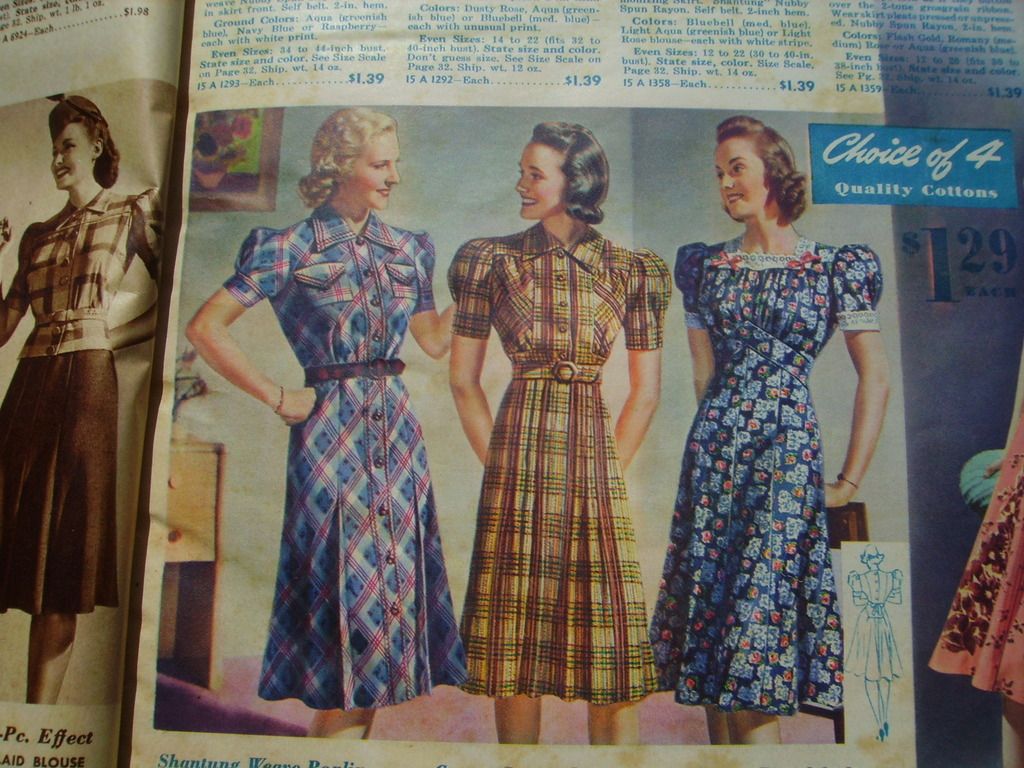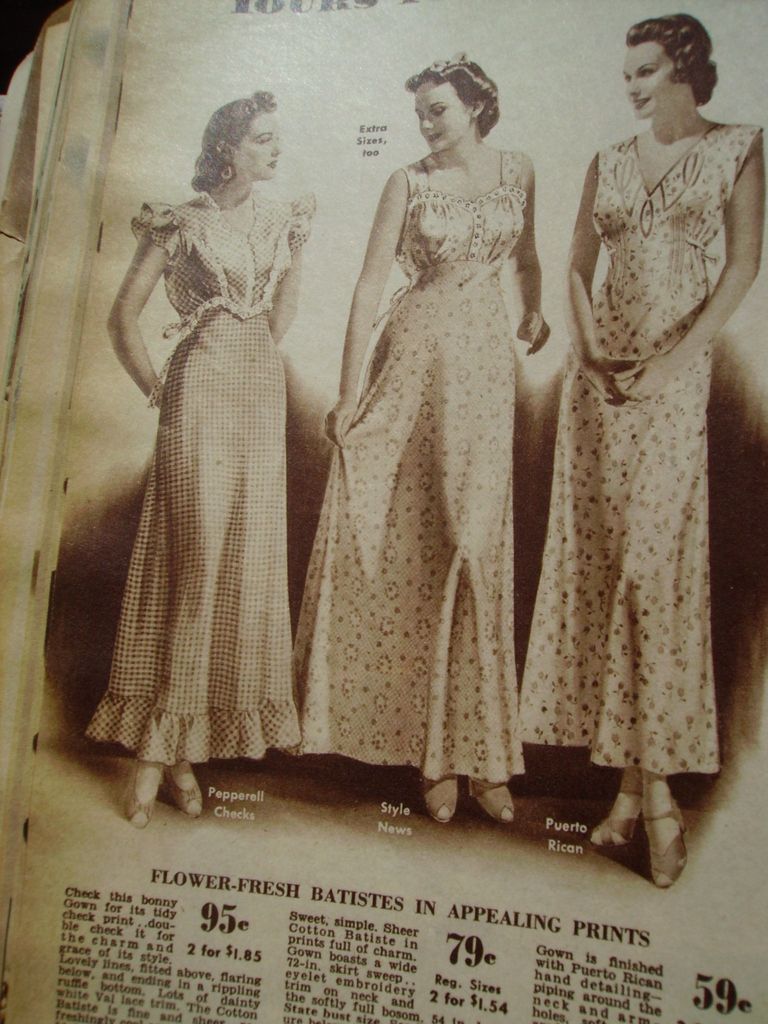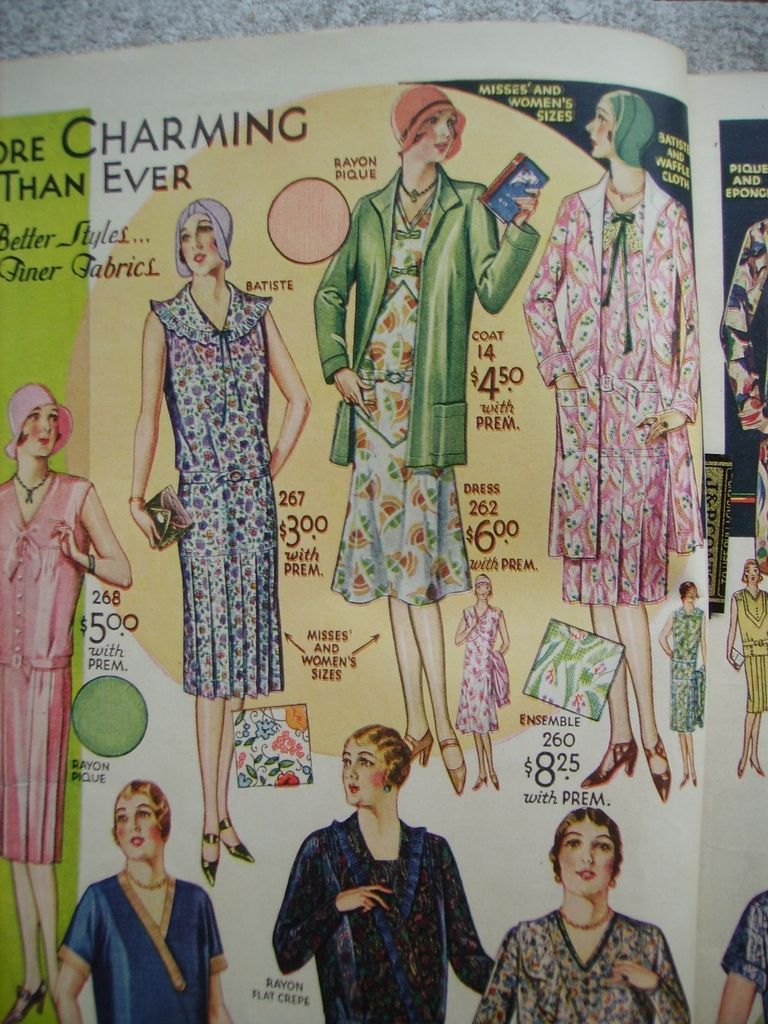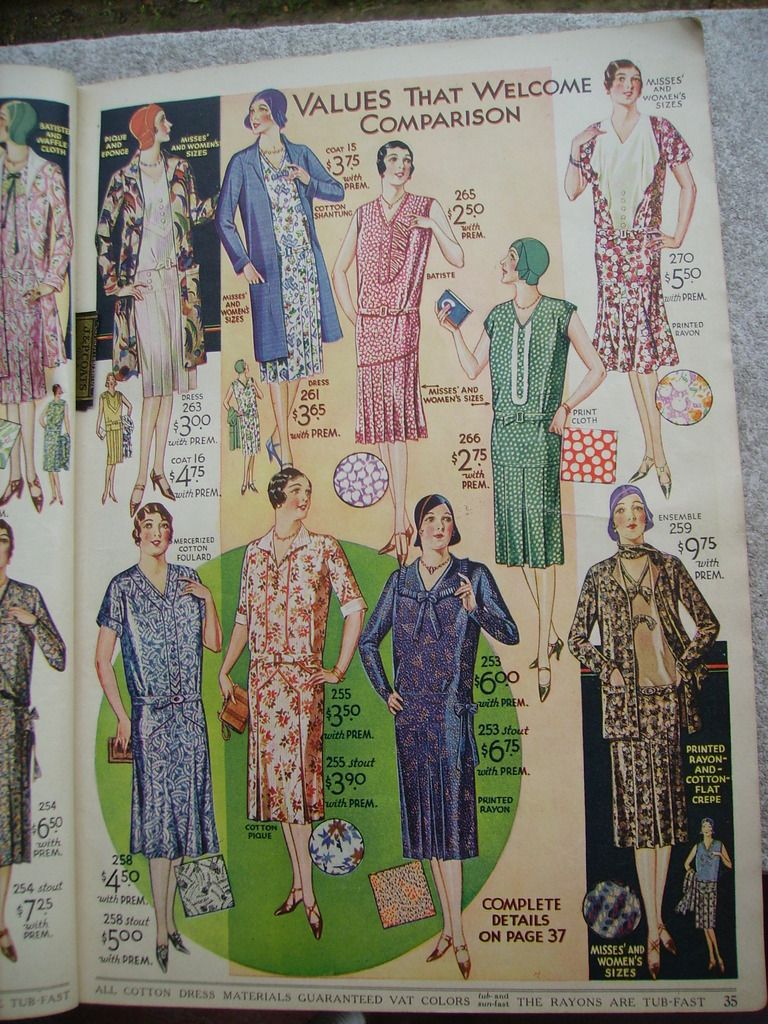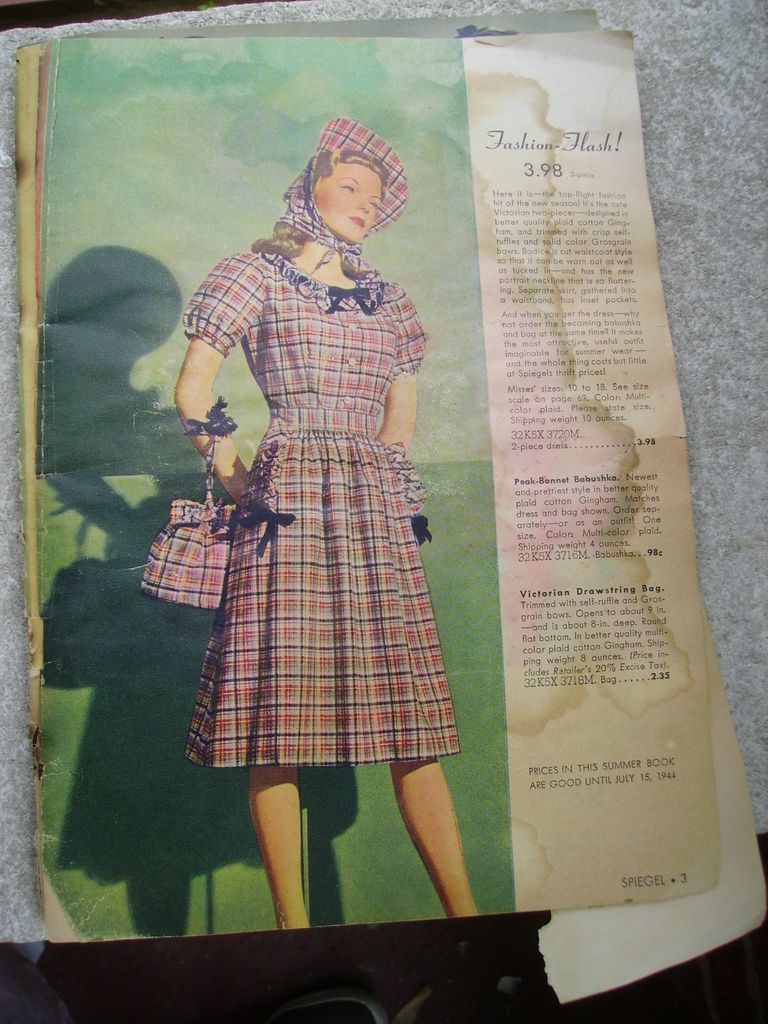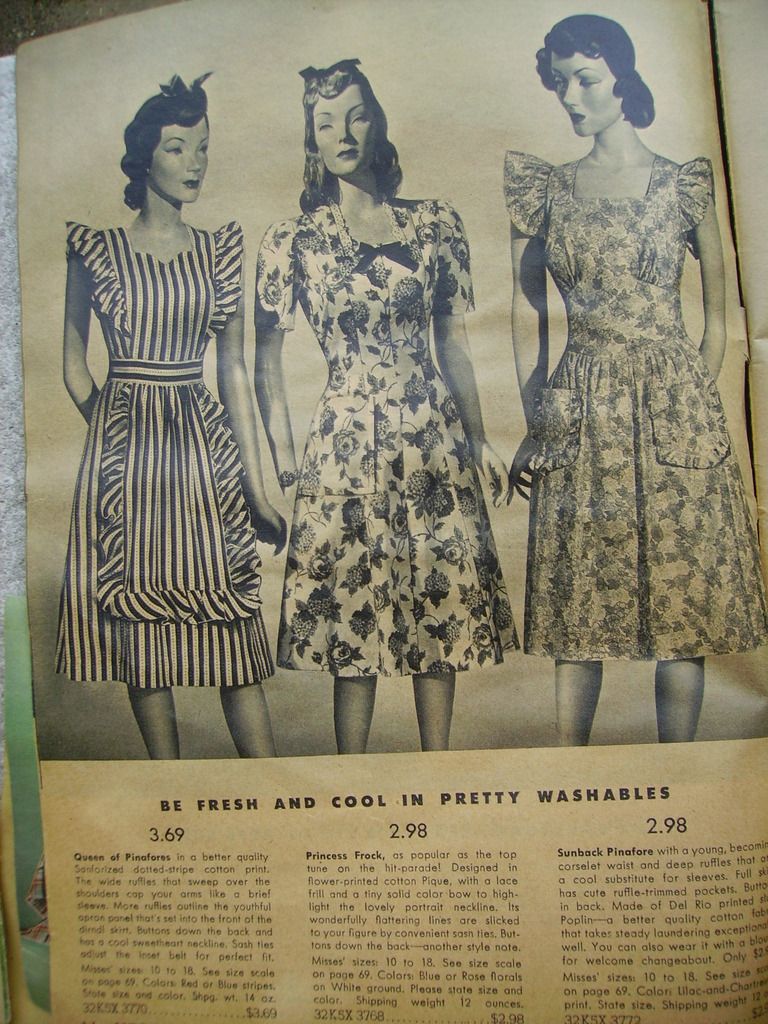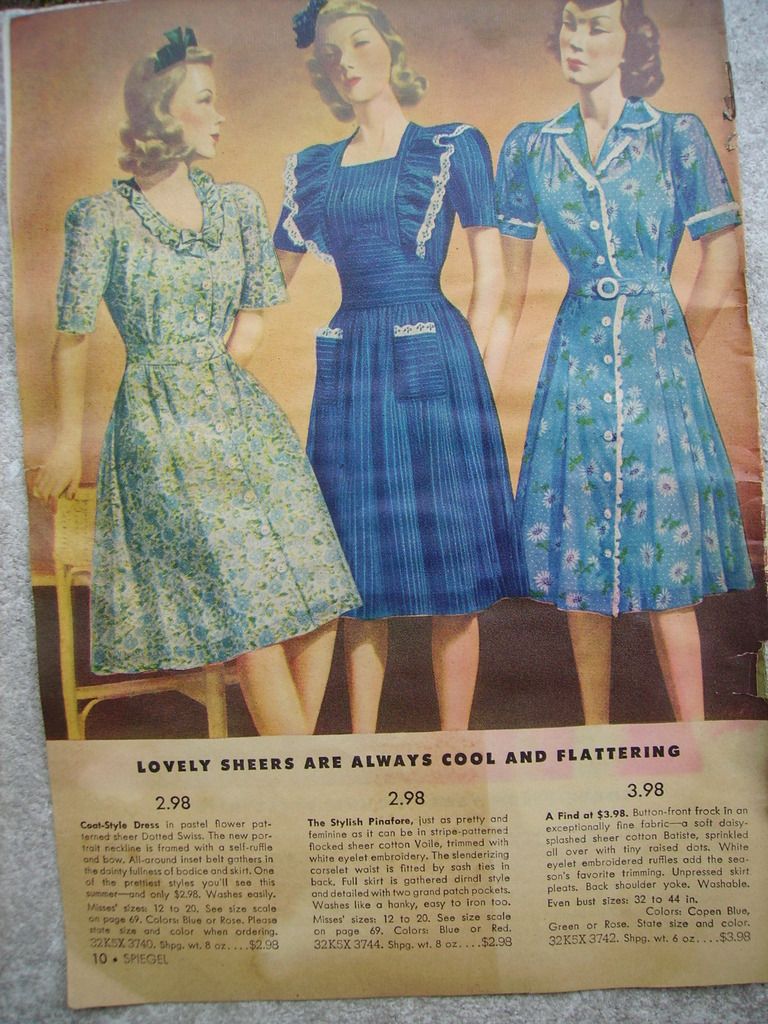St. Louis
Practically Family
- Messages
- 618
- Location
- St. Louis, MO
Hello ladies,
I'm making progress on my sew-along (see the thread in the front parlor), though I haven't posted any photos yet. They're coming, I promise.
Meanwhile, I'm trying to figure out what the average lady would have worn in the summer. By "average," I mean, someone like me -- respectable, not wealthy, lives in a small bungalow in St. Louis. I've been studying mail order catalogs from roughly the mid-1930s to the mid-1940s. I'm assuming that's the level of price and value I'd have been able to afford.
To my surprise, especially considering the hot, humid weather here, I found no real "summer" clothes, at least not clothes I would consider comfortable in the 95 to 100 degree temperatures and nearly 100 percent humidity. I certainly wasn't expecting sundresses, but I did think that I'd find lightweight, sheer, somewhat looser constructions.
I'm posting a few images here to show what I mean. These are all from a 1940 Spring/ Summer catalog, and they're quite typical. For example, just looking at the summery rayon and cotton dresses , they tend to be fitted, with pleats, belts or sashes, pocket trimming--I'd consider these fairly heavy, particularly for a very hot summer day in an era without air conditioning.
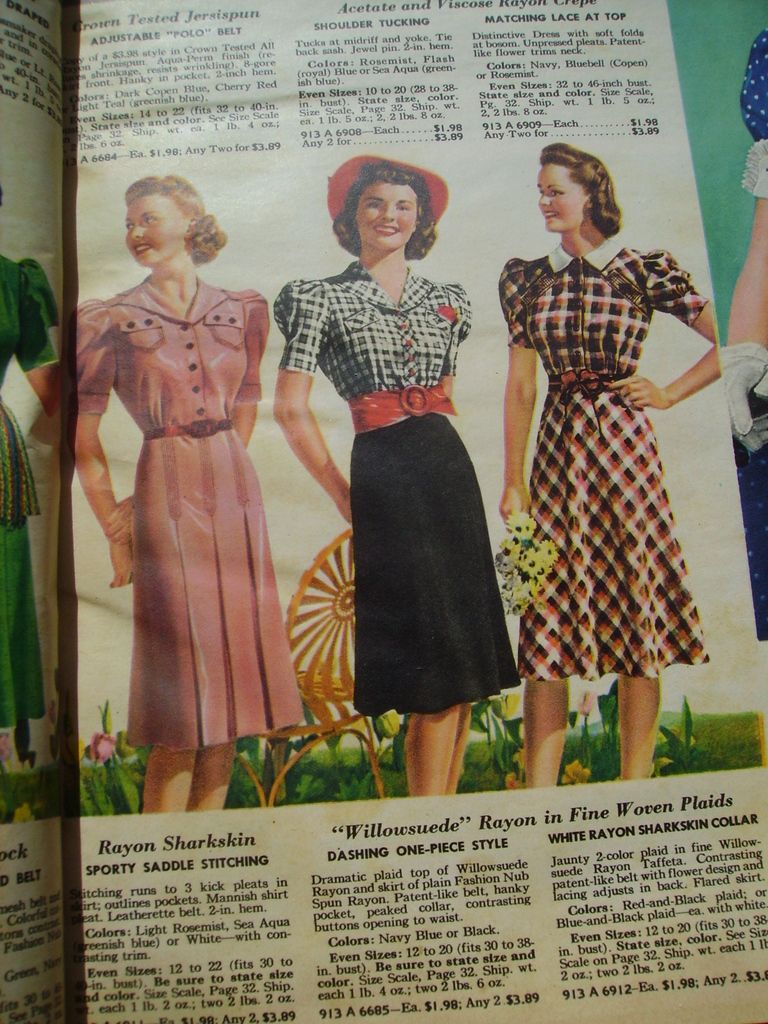
I'm making progress on my sew-along (see the thread in the front parlor), though I haven't posted any photos yet. They're coming, I promise.
Meanwhile, I'm trying to figure out what the average lady would have worn in the summer. By "average," I mean, someone like me -- respectable, not wealthy, lives in a small bungalow in St. Louis. I've been studying mail order catalogs from roughly the mid-1930s to the mid-1940s. I'm assuming that's the level of price and value I'd have been able to afford.
To my surprise, especially considering the hot, humid weather here, I found no real "summer" clothes, at least not clothes I would consider comfortable in the 95 to 100 degree temperatures and nearly 100 percent humidity. I certainly wasn't expecting sundresses, but I did think that I'd find lightweight, sheer, somewhat looser constructions.
I'm posting a few images here to show what I mean. These are all from a 1940 Spring/ Summer catalog, and they're quite typical. For example, just looking at the summery rayon and cotton dresses , they tend to be fitted, with pleats, belts or sashes, pocket trimming--I'd consider these fairly heavy, particularly for a very hot summer day in an era without air conditioning.

